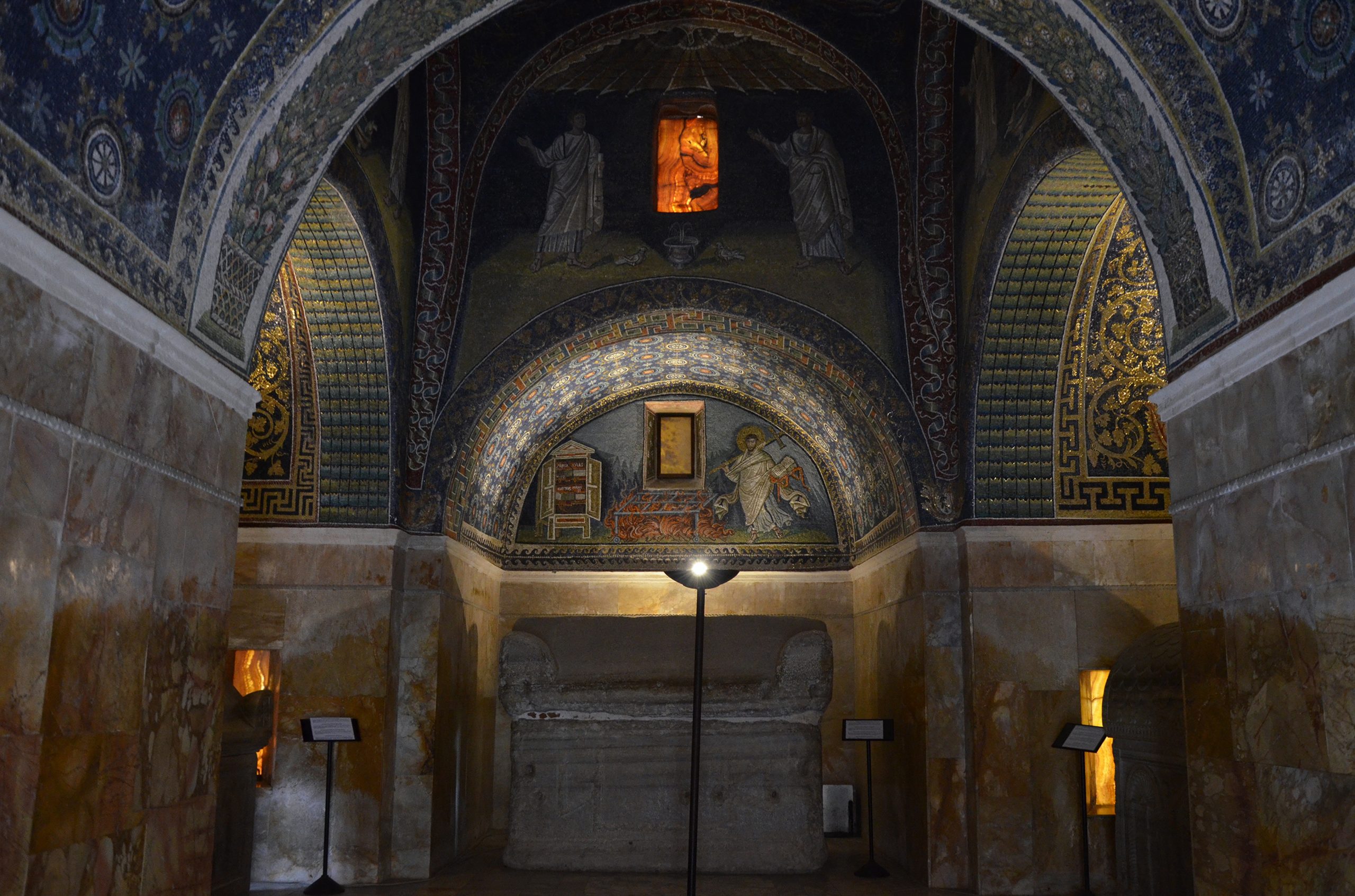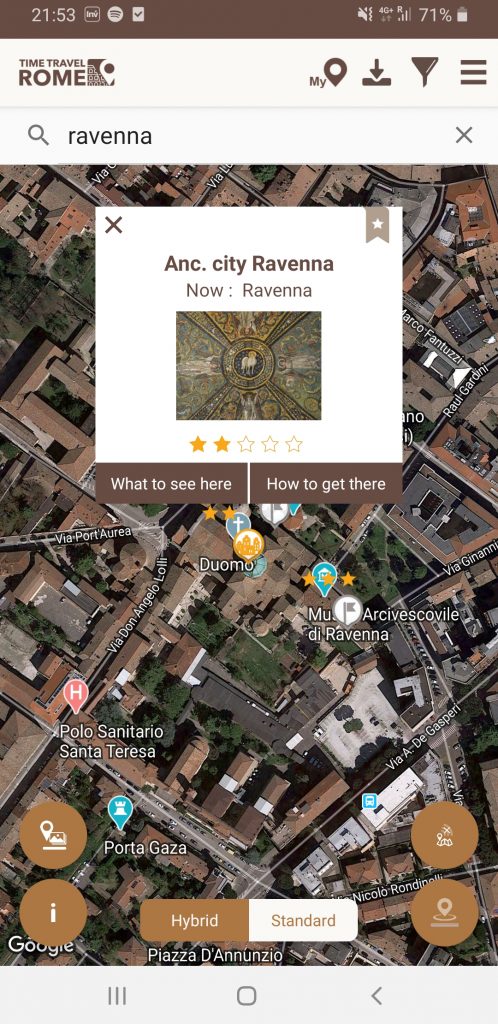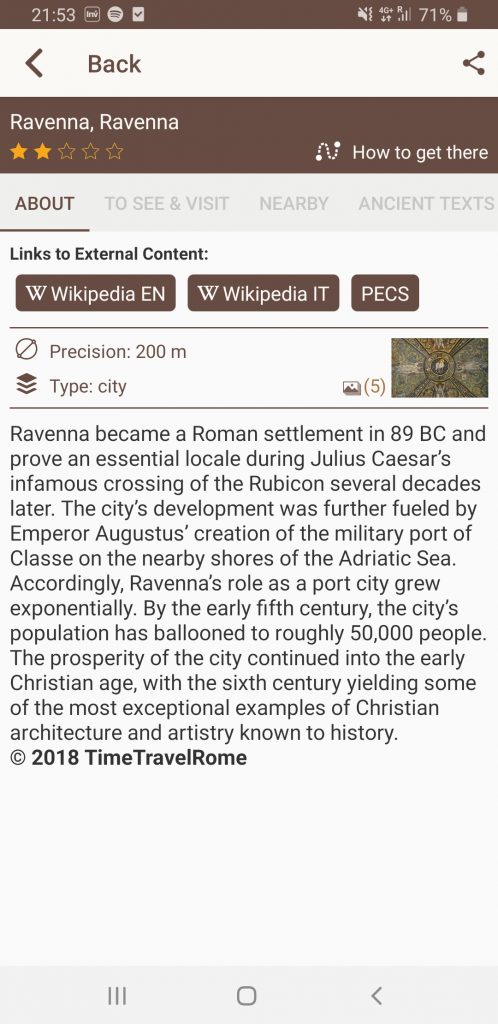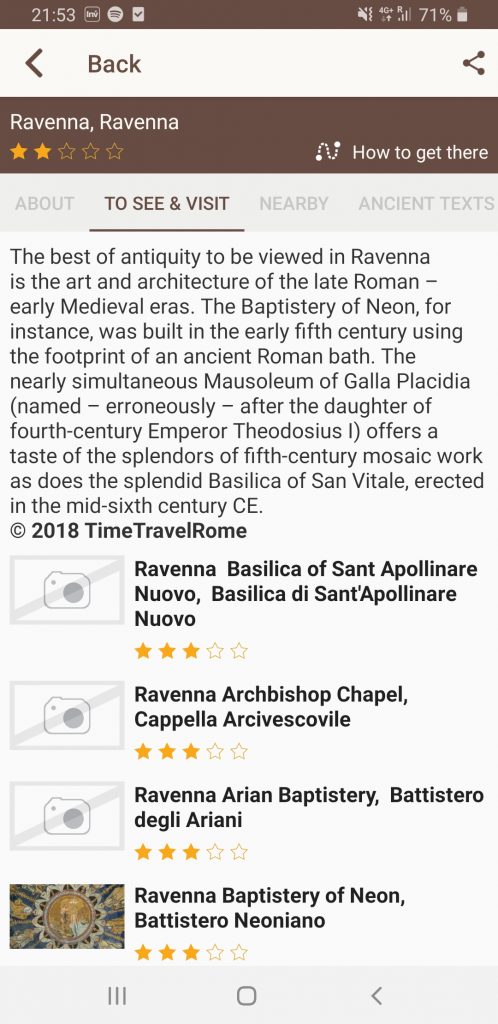Author: Kieren Johns
All roads lead to Rome, or so the old proverb goes. For those of us with an interest in the ancient world, it’s a saying that still very much rings true to this day. Whether it’s a chance to explore the remains of the ancient city itself in the Forum, or the opportunity to get up close and personal with the masterpieces of ancient art in the city’s many museums, there is more than enough to keep you interested for days and weeks – and probably longer!
But, what about when you’re ready to leave the eternal city and explore further afield? Below are 5 of the most impressive and interesting sites to explore in Italy to the north of Rome.
1. Brixia
Modern Brescia located in the northern region of Lombardy at the foot of the Alps has a history that stretches back at least 3,200 years and pre-dates the Romans, although visitors to the city can enjoy incredible sights from the ancient, medieval, and Renaissance periods.
With disputed mythic origins – incorporating Hercules, refugees from the siege of Troy, and Cidnus, a native King – the city of Brixia is known to have enjoyed a long and fruitful relationship with Rome. Having allied with the Romans against the Carthaginians during the Punic Wars, it enjoyed a certain level of political independence and administrative freedom, being formally recognised as civitas in 89 BC, whilst the inhabitants became Roman citizens in 41 BC. Embracing Roman forms of civic life and identity led to the monumentalisation of Brixia. Today, visitors can explore the UNESCO World Heritage listed remains of the Roman Forum. These structures, incorporating several religious structures and a theatre, are perhaps the best-preserved Roman public buildings that have survived in northern Italy.
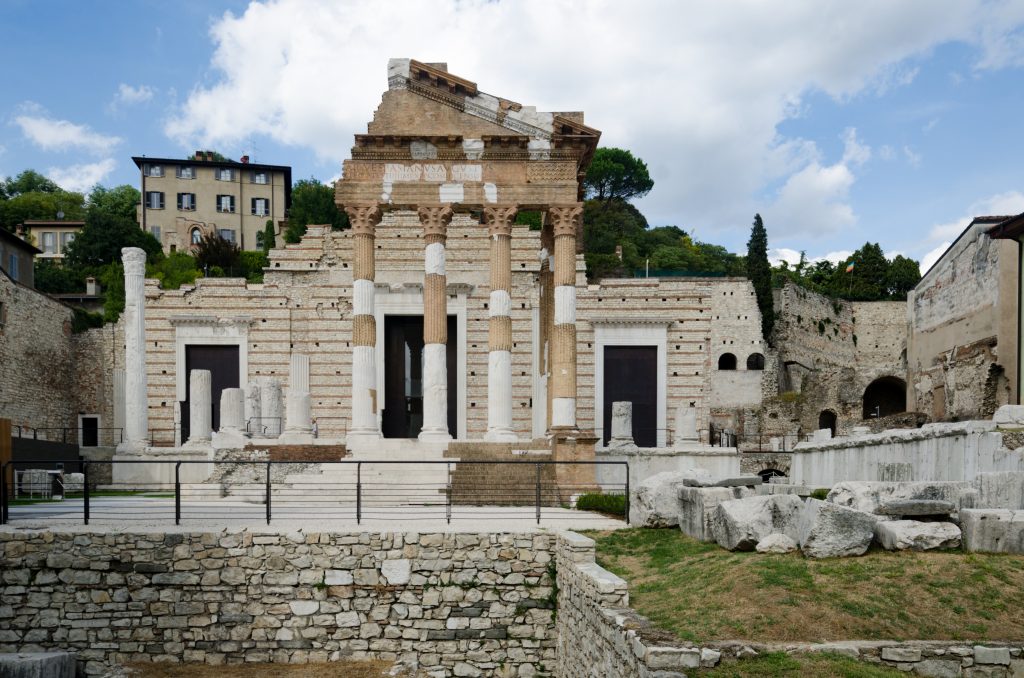
These include the Republican sanctuary dating to the 1st century BC (the oldest structure in the forum area). Perhaps more impressive is the Capitolium temple, dedicated to the three main gods of the Roman pantheon: Jupiter, Juno, and Minerva. Dating to the year AD 73, the reign of the Emperor Vespasian, the surviving archaeological evidence attests to the richness of the temple’s ornamentation, including polychrome marble flooring. The walls of the cellae, the main inner rooms of the temples, are not decorated with remains of Roman inscriptions that have been recovered from the area are displayed. The theatre, similarly dated to the Flavian era, is one of the largest such structures in northern Italy, and it is estimated to have once seated almost 15,000 spectators.
2. Volterra
A charming and picturesque Tuscan mountaintop town, Volterra has been continuously occupied since at least the Bronze Age period. To the Etruscans who called the site home, it was called Velathri, and highly prized for its easily defensible position. Its increasing prominence led to is inclusion as part of the Etruscan League, which included other notable settlements such as Veii and Cerveteri.
Roman expansion from the 3rd century led the city – along with other Etruscan settlements – into competition and ultimately conflict with the Romans. With Roman ascendancy assured following a battle in 298 BC, many of the Etruscan sites – including Volterra – became allies, contributing to the Roman cause during the Punic Wars, notably the Second (218 – 201BC) in which Scipio Africanus led the fight against Hannibal. Volterra’s decision making in Roman wars was not always so perceptive; the town backed the losing side in the first of Rome’s 1st century BC civil wars, and was sacked in retaliation by Sulla in 80 BC following a 2 years siege (the Etruscans had evidently recognised an exceptional defensive location!) Sulla’s decision to settle some of his veterans at the site confirmed Volterra’s new reality; this was a Roman town now.
————————–
DID YOU KNOW?: The writer Aulus Caecina, a member of the prominent Caecina family from Volterra was a good friend of the Roman Republic’s most famous orator, Cicero (some of their letters are recorded in Cicero’s Epistulae ad Familiares vi. 5-8). Aulus is also known to have raced his chariot team in the Circus Maximus in the imperial capital, indicating how wealthy he was!
————————–
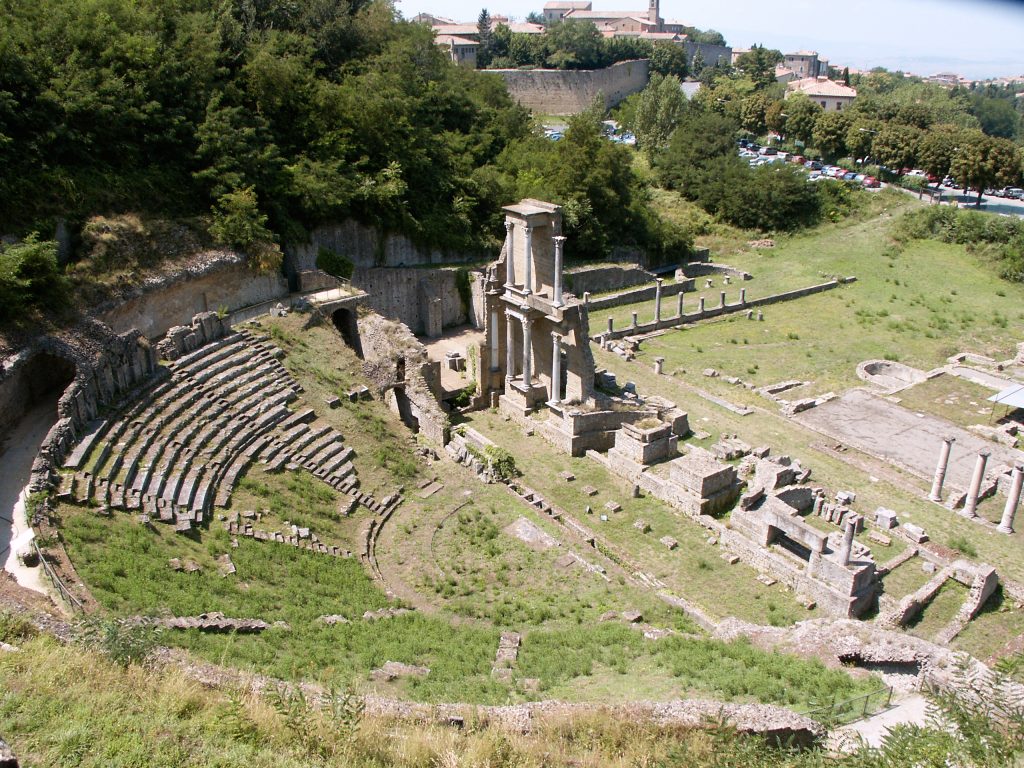
Today, Volterra is a beautiful retreat off of the well-trodden tourist trail in northern Italy. Although much of the present town belongs to the medieval period, there is still much to see here. The local museum, the Guarnacci Etruscan Museum has a host of splendid remains to explore, including thousands of the funerary urns that have been recovered from the burial sites in the region, as well as a number of excellent artworks from the Archaic and Hellenistic periods. The ancient defensive walls, which proved so troublesome to Sulla’s forces, are also still standing in some places, giving an excellent indication as to their stature. Undoubtedly the standout site from Volterra however is the Roman theatre, dating to the 1st century BC, and seating an estimated 3,500 spectators. Funded by the Caecina family, the theatre mimics Greek structures in that it is partially built into the natural hill. A significant portion of the scaenea frons is still standing, forming an impressive backdrop to a magnificent site.
3. Carsulae
Located in the central region of Umbria, Carsulae was actually founded relatively late; archaeologists estimate around the latter years of the 3rd century BC (220-219BC). Its origins, however, are decidedly Roman, as the town was first built in connection with the establishment of the Via Flaminia, the great road that ran north east from Rome, linking the city to Ariminium (Rimini) on the Adriatic coast. Carsulae enjoyed a boon during the reign of Augustus, with many major public works undertaken during this time, including the amphitheatre and a good portion of the forum.
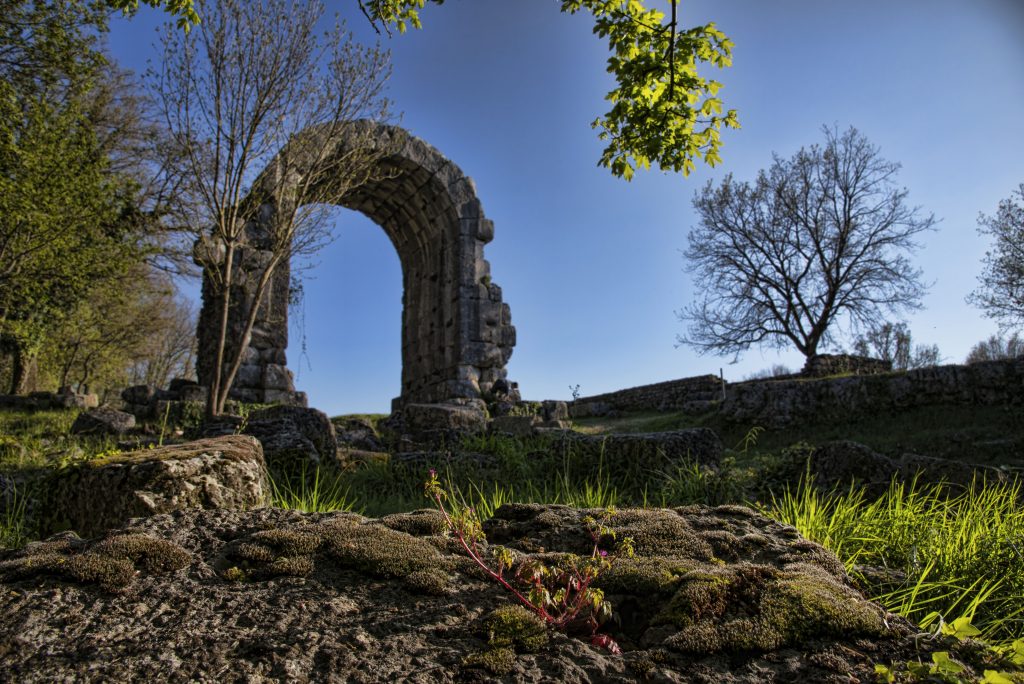
Note: This structure is the misleadingly labelled Arco di Traiano at Carsuale which stands above the Via Flaminia at Carsulae. Despite its name, it was built in the Augustan age as the symbolic northern entrance way to the town.
For some reason still not clear to historians and archaeologists, the site of Carsulae was largely abandoned in antiquity and never seemingly repopulated in any great way. Instead, the site became a quarry for building materials. This means that the structures here became the spolia that would be used in the construction and alteration of neighbouring towns such as San Gemini, Terni, and Cesi. Indeed, in the latter one can still see ancient Roman tombstones built into the walls of the former church of S. Andrea!
Thankfully, the town was completely spoliated. For visitors today there are a wealth of wonderful sites to explore at the archaeological park at Carsulae, with various international universities having worked on the excavation of the site’s many monuments. As such, many of the glories of Carsulae’s Augustan ‘Golden Age’ can still be explored. Visitors would be well advised to explore the town’s ancient urban centre, including the forum, with the remains of the basilica and twin temples (dedicated to unknown deities). Elsewhere, the thermal baths, theatre, and amphitheatre stand as records of the recognisably Roman way of life enjoyed by the residents of Carsulae in antiquity.
4. Faesula
Just a short trip away from the city of Florence (on everyone’s Italian must-see list), is the wonderful Tuscan hilltop town of Fiesole, the site of the ancient Faesulae. Likely first settled by the Etruscans in the 9th or 8th century BC, the remains of its ancient walls attest to its former prominence as a member of the Etruscan League.
The town is first recorded during the Roman period, where it was the home of a famous school of augurs. These were priests who claimed to understand the will of the gods based on their studying the flight of birds. They are frequently identified by their lituus, a small curved wand-like instrument; these are most common on Roman coins. Faesulae was colonised by Sulla’s veterans in the aftermath of the civil wars in the early years of the 1st century BC.
The town has also been the site of several important battles. The first occurred in 225 BC when an allegiance of Italic people (including Samnites, Etruscans and Umbrians) led by the Roman Republic fought against a group of Gauls aiming to settle in Italy. Although the Gauls actually defeated the Romans here it was far from conclusive, and the Battle of Telamon in the same year led to Roman victory. The second Battle of Faesulae occurred in AD 406, when the Western Roman Empire, led by the great general Stilicho, fought against the invading Goths and Vandals, led by Radagaisus. In this second battle, the Romans forces were victorious (with a little help from some Hun and Goth allies).
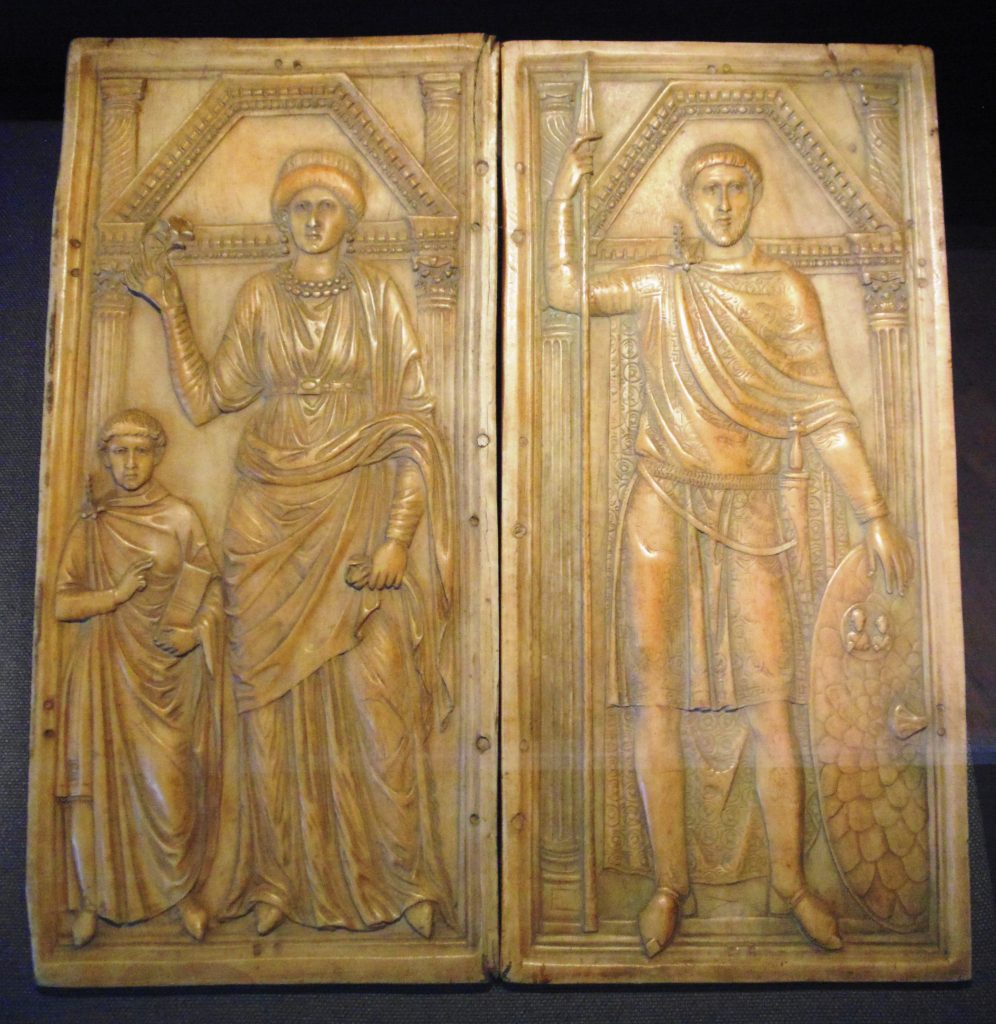
Note: Despite being half-Vandal, Stilicho – shown here on diptych from the late 4th century (AD 395) – was one of the defining characters of the last years of the Western Roman Empire. Serving as magister militum he was briefly one of the most powerful men in the Empire, and he won many notable battles for an embattled empire. He was eventually arrested and executed after court intrigues in AD 408.
—————–
DID YOU KNOW?: Even though he was half-Vandal and fell from power, Stilicho’s career represented the height of Germanic advancement within the court structures of the Western Roman Empire, and he enjoyed an excellent reputation in later historical accounts. Edward Gibbon, in the Fall of the Roman Empire, characterised him as, “the last of the Roman generals” for his virtuous defense of the Empire from invasion.
—————-
Visitors looking to escape the hustle and bustle of Florence’s many (excellent museums) or the crowds around the Duomo will find Fiesole well worth exploring. Not only are there remains of the ancient Etruscan walls still to be seen, but there are also the Roman baths and the theatre. Also of interest may be the Villa Sparta. This strikingly named villa was actually the former home of the Greek Royal family in exile – the ancient world is everywhere!
5. Ravenna
There can be no dispute: Ravenna is one of the most incredible sites northern Italy has to offer. Located in the Emilia-Romagna region in the north east of the country, this became the leading Italian city as the Western Roman Empire entered its final phases in the 5th centuries. Befitting it’s rise in status to de facto imperial capital, it enjoyed a boon in art and architecture, the remains of which today are spellbinding.
In AD 402 the Emperor Honorius transferred the capital of the Western Empire to the city under the misguided belief that its marshy location would make it easily defensible. The close connections to the Adriatic coast meant that it also offered excellent links to the Eastern Roman Empire (based in Constantinople). In reality, the choice of capital did little to alleviate the perils that faced the Western Empire now; in AD 409 the attacking Visigoths – led by King Alaric I – simply marched straight past the new capital on their way to sack Rome in an attack that would have profound ideological implications for the strength of the Empire. After the Western Empire fell with the deposition of Romulus Augustulus in AD 476, the Eastern Empire became focused on the goal of reclaiming these Italian territories as a matter of urgency. A concerted effort was made by the Justinian the Great’s general, Belisarius, in the mid-6th century. A brief Byzantine revival was achieved, but it would fall in the mid-8th century with the arrival of the Lombards.
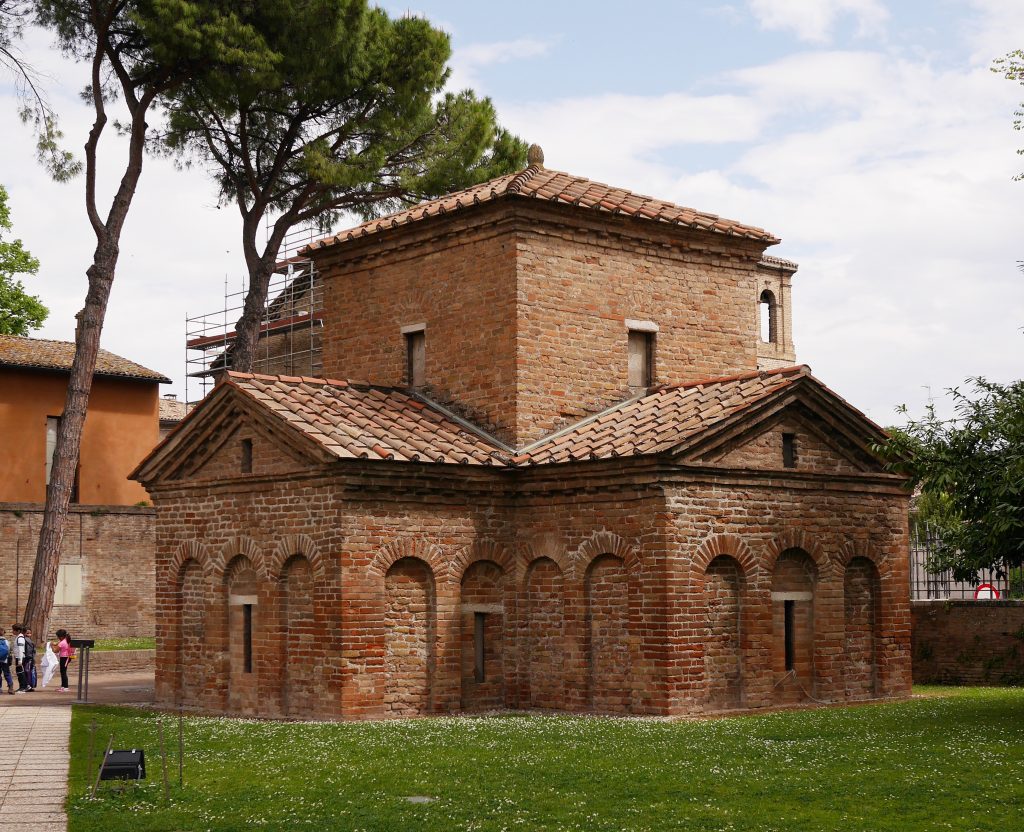
Note: This unassuming brick-faced building in Ravenna is the Mausoleum of Galla Placidia, the daughter f the Emperor Theodosius I and the mother of Valentinian III. Venture inside however, and visitors are greeted by a site fit for a woman of such status. Explosions of late roman polychromatic splendour rain down from the mosaic decorations on the vault, lunettes, and the cupola, including the traditional Christian scene of the Good Shepherd.
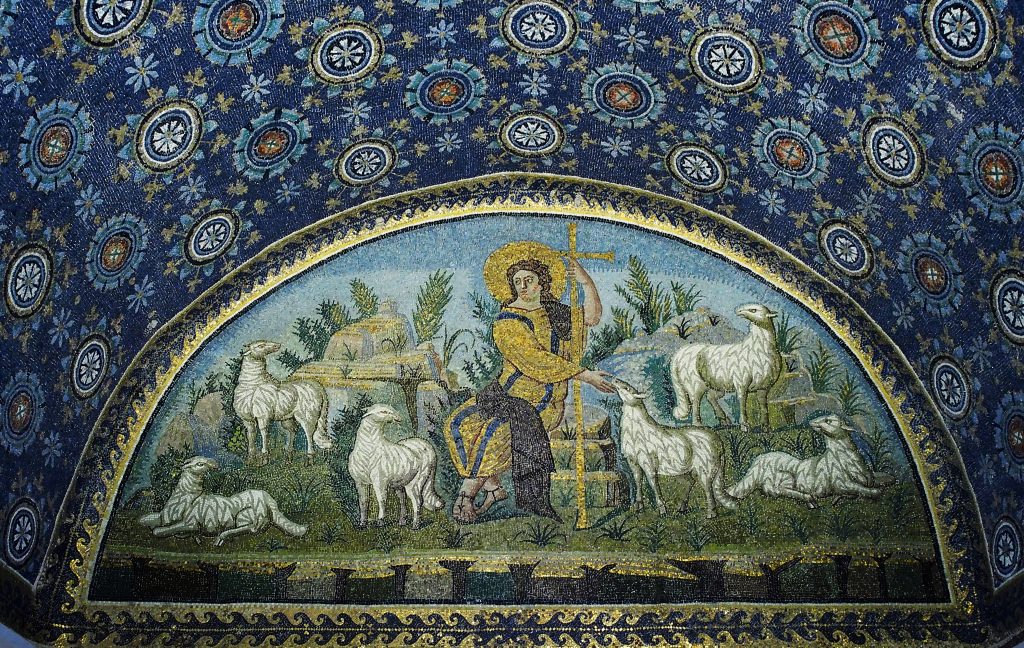
As befitting the Capital of the Western Roman Empire and the seat of a Byzantine Exarchate the art and architecture of ancient Ravenna is magnificent, with a number of monuments on the UNESCO World Heritage List. These include the Orthodox Baptistry (built ca. AD 430) and the Mausoleums of Galla Placidia and Theodoric respectively (ca. AD 430 and 520). The Mausoleum of Galla Placidia remains a standout site, and a celebration of late Roman colour. Glorious mosaic artworks adorn the vault of the structure inside which three sarcophagi were discovered, which were attributed to Galla Placidia herself, her son the Emperor Valentinian III and the Emperor Constantius III. Visitors to the Basilica of San Vitale are similarly rewarded for casting their eyes skywards. In this important example of early Christian art and architecture, which deviates from the form of a traditional basilica, one can discover exceptional mosaic decoration. These include famous portrait panels from AD 547 that depict the Byzantine Emperor Justinian I, and his wife, the Empress Theodora. Looking up at the slight scowl of the emperor, radiant against a field of gold, the visitor is left in no doubt that they are looking upon a new world order.
-
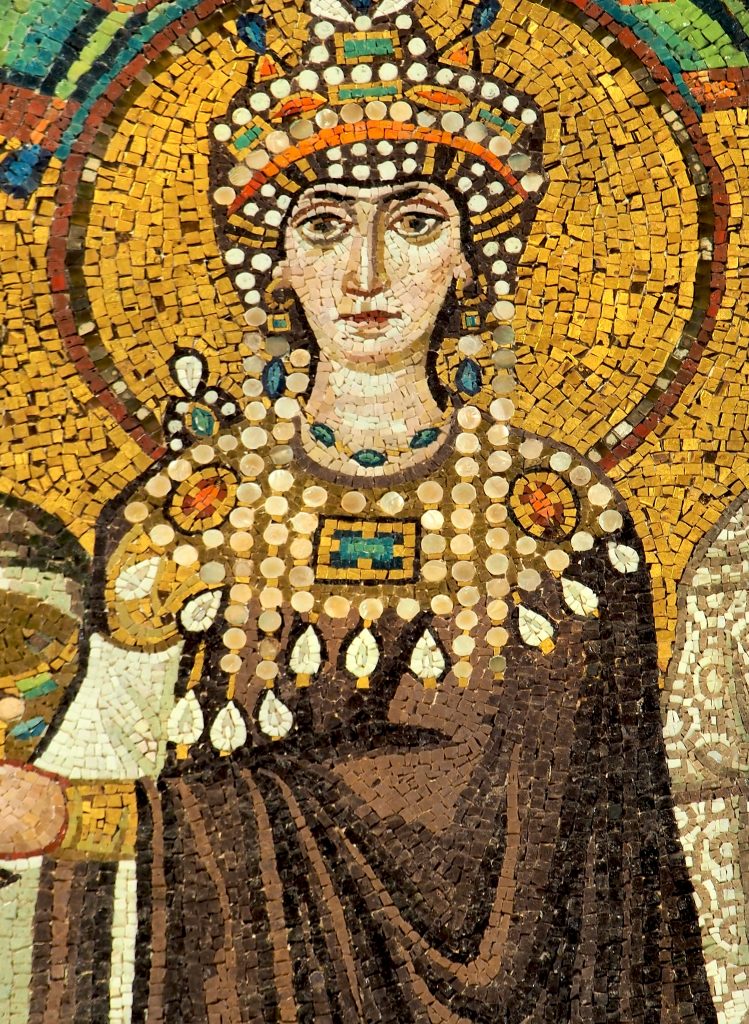
Theodora (basilica San Vitale, Ravenna) -
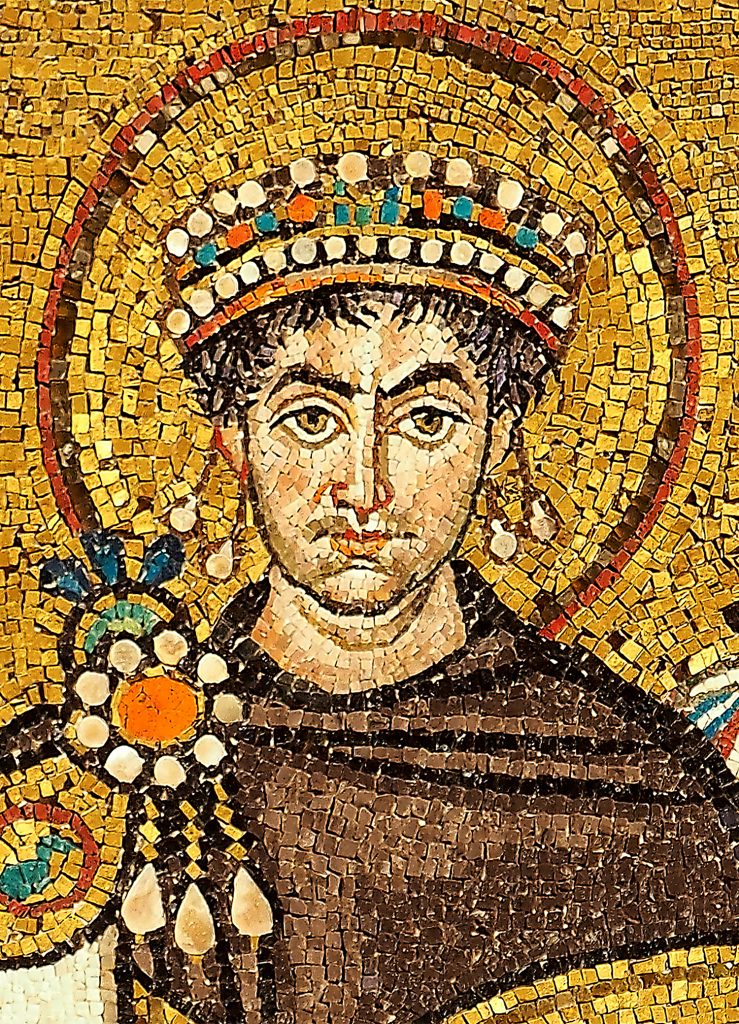
mosaic of Justinian I (Ravenna)
These mosaics depict the emperor of the Eastern Roman Empire, Justinian the Great and his notorious wife, the Empress Theodora. These mosaics, the largest and best preserved Byzantine artworks outside of Constantinople are located in the Basilica of San Vitale at Ravenna. Source: Picture by Petar Milošević licensed under CC BY-SA 4.0.
Ravenna on Timetravelrome App:
Our mobile app offers a complete guide to the ancient Ravenna: all important ancient monuments are located on the map and described in detail.
Author: Kieren Johns for Timetravelrome
Header image: Mausoleum of Galla Placidia (died 450), daughter of the Roman Emperor Theodosius I, Ravenna. Picture by Carole Raddato licensed under CC BY-SA 2.0.
